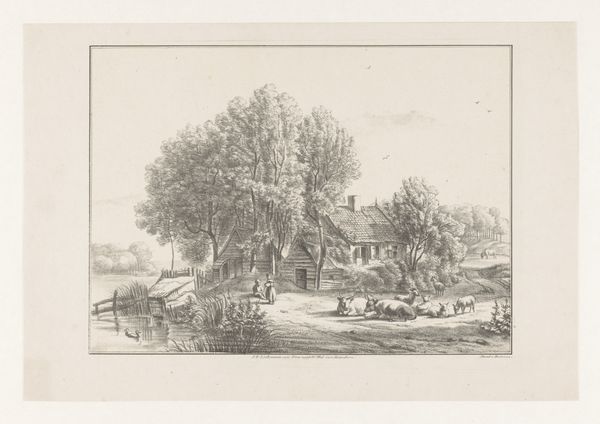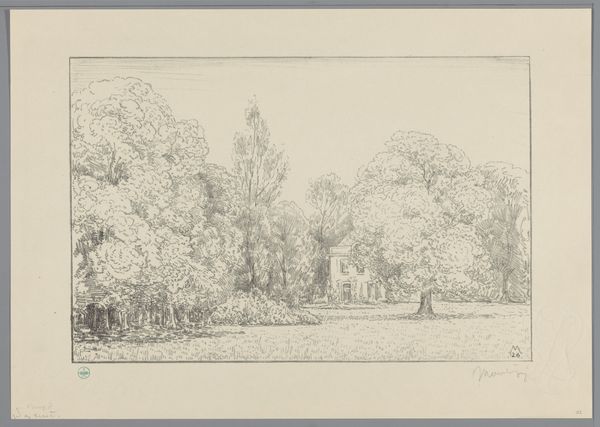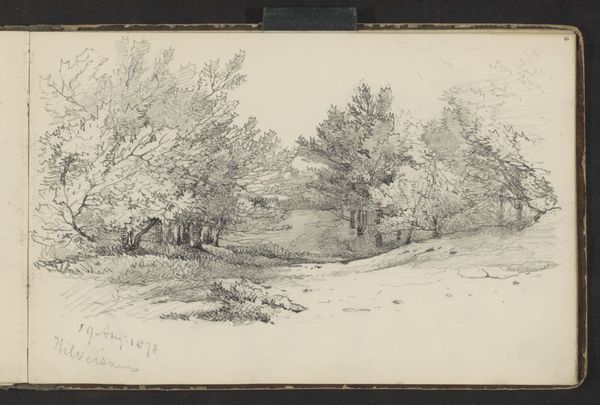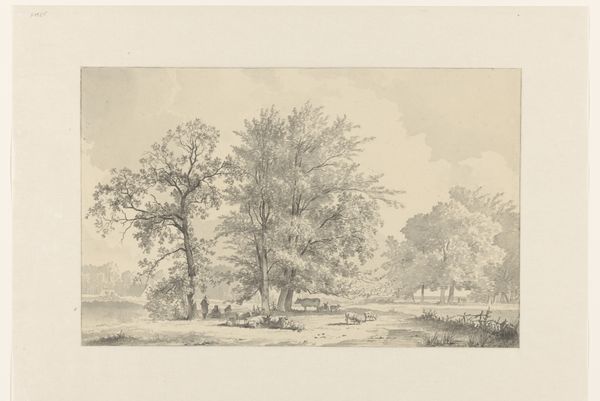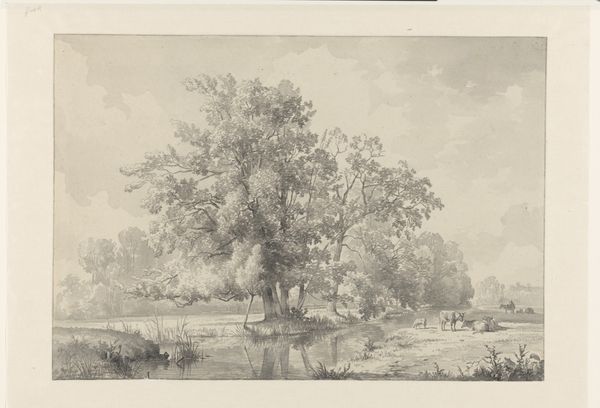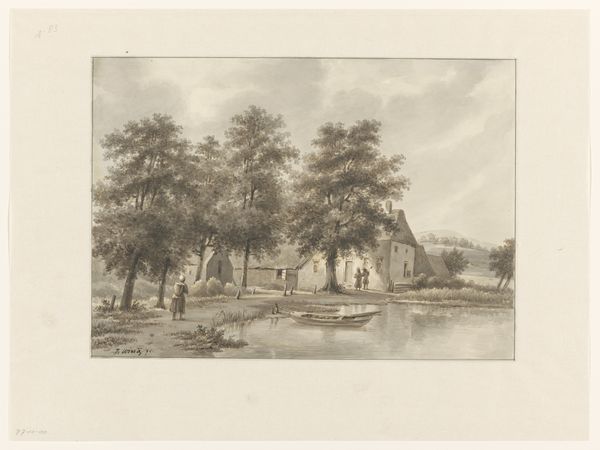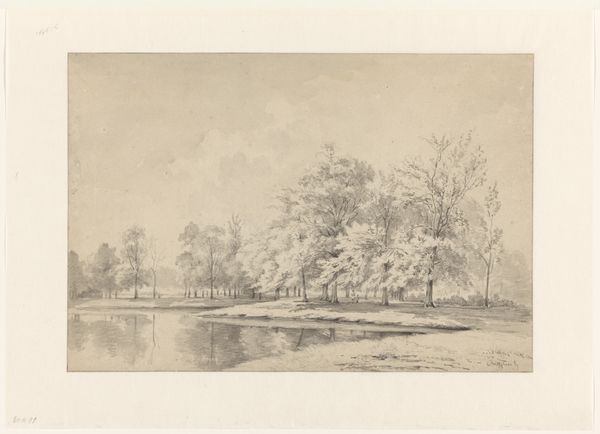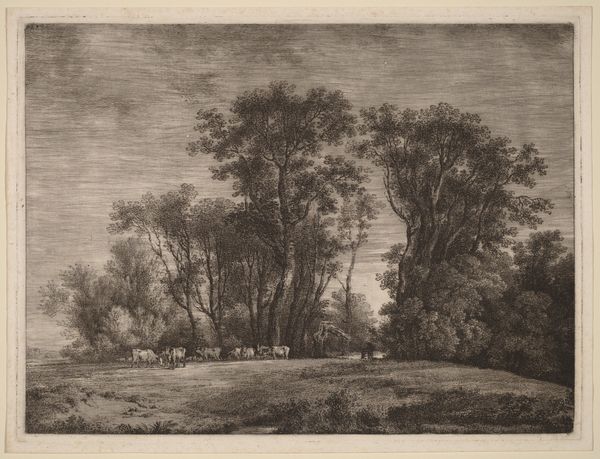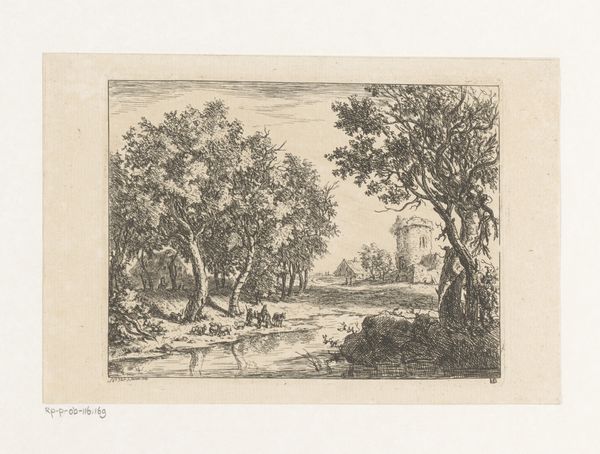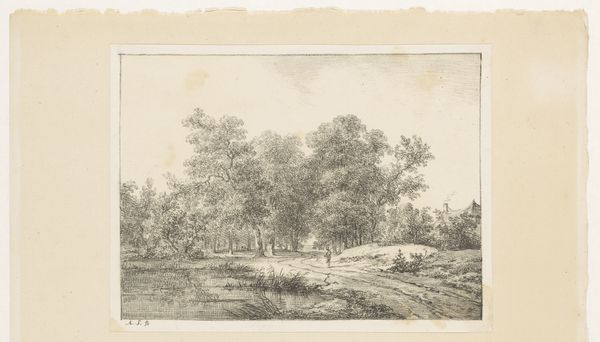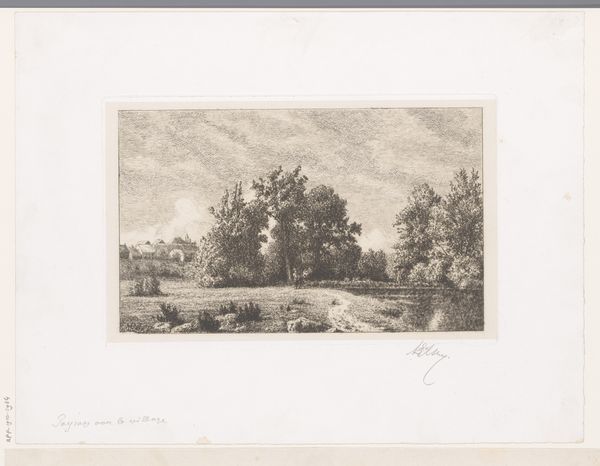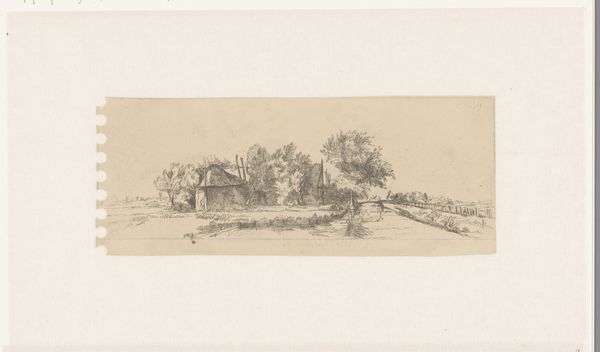
drawing, pencil
#
drawing
#
landscape
#
etching
#
pencil
#
realism
Dimensions: height 260 mm, width 394 mm
Copyright: Rijks Museum: Open Domain
Curator: It's incredible how landscapes capture so much cultural context. Take this pencil drawing by Cornelis Steffelaar, created sometime between 1807 and 1861. The title translates to "Meadow with pollard willows and a church tower in the background." It’s a scene of serene rural life. Editor: My immediate impression is of quiet stillness. The muted tones create a sense of timelessness, almost as if we are looking at a faded memory. There is also something a little haunting about it for me. Curator: The symbolism in these landscapes can be subtle yet profound. The church steeple is a key indicator of societal structure, right? Dominating, yet a comforting backdrop, promising stability, tradition... the pollard willows may signify managed nature, a symbiotic partnership with human labor. What associations do these evoke for you? Editor: Well, thinking historically, the presence of pollard willows alongside a church tower in Dutch landscape art carries multiple layers. The church definitely grounds the society of the day, but those specific willows represent resilience. It tells me a story about resource management and agricultural practices of the time, highlighting a deliberate engagement between the community and its landscape. It alludes to rural economics. Curator: I agree; there is clear connection between people, land, and livelihood. What's interesting to me is how the scene is framed. With the broken fence dominating the view. It is a pretty direct symbol, don't you think? Editor: Perhaps it's deliberately imperfect, hinting at a sense of human encroachment and change affecting the traditional pastoral landscape. A symbol that can lead to social critique of the human-altered landscape, in my opinion. Curator: An intrusion or simply… the beauty in brokenness? The charm of decay, like the Japanese aesthetic of "wabi-sabi", where imperfection becomes its own art form? Or does that seem too romantic an interpretation? Editor: Perhaps. Either way, its social importance isn't necessarily dictated by how we choose to perceive it today; this drawing allows viewers a glimpse into the changing dynamics and cultural significance embedded in ordinary settings of the past. I find it insightful. Curator: Indeed. This artwork reminds us to look beyond pretty landscapes to see the deeper human story intertwined within. Editor: A worthwhile moment spent considering not just what we see, but what it represents.
Comments
No comments
Be the first to comment and join the conversation on the ultimate creative platform.
